Third Temporary Channel Opened in Baltimore

The Captain of the Port (COTP) has established the Fort Carroll Temporary Alternate Channel, which is on the northeast side of the main channel in the vicinity of the Francis Scott Key Bridge and will provide limited access for commercially essential vessels.The channel has a controlling depth of 20 feet, a 300-foot horizontal clearance, and a vertical clearance of 135 feet, and will facilitate additional commercially essential vessel traffic through the port of Baltimore.“This additional channel increases the types of vessels able to transit inbound and outbound the port of Baltimore…
Commercial Ports Reopen in Wake of Typhoon Bolaven

Key commercial ports of Guam, Rota, and Saipan have been reopened in the wake of Typhoon Bolaven, the U.S. Coast Guard said."This decision, effective at noon on Oct. 11, 2023, follows meticulous assessments conducted by our dedicated crews and trusted partners." the Coast guard said.The Coast Guard Captain of the Port (COTP) has downgraded the Port Heavy Weather Condition to WHISKEY, signifying the ports' readiness to resume operations from a regulatory and navigation safety standpoint.Teams…
Big City Fireboats
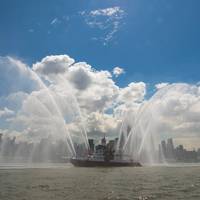
On March 3, the Coast Guard published a notice that Martin Midstream Partners (MMP), a petrochemical transport and storage company, was seeking approval to modify terminal operations in Beaumont, Texas, along the Sabine-Neches Waterway. If approved, MMP would expand its liquefied hazardous gas (LHG) operations, both in volume and products. Instead of just handling ammonia the change would allow shipments of butane, propane, ethane, ethylene and propylene.Critically, MMP’s expansion would increase LHG vessel transit from 24 ships to as many as 350 per year.
USCG Advises on Minimizing Novel Coronavirus at Sea

The Coast Guard Assistant Commandant for Prevention Policy has published an update March 16, 2020 to MSIB: Novel Coronavirus – Update (Change 2)An outbreak of respiratory illness caused by a novel coronavirus (COVID-19) may affect mariners and maritime commerce. The Centers for Disease Control and Prevention (CDC) has updated their Interim Guidance for Ships on Managing Suspected Coronavirus Disease 2019 (see https://go.usa.gov/xdfyG) and Cruise Ship Travel (see https://go.usa.gov/xdfVP).Illness…
USCG Sets Port Condition Zulu for Charleston
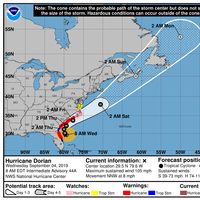
Effective 8 a.m. Wednesday, the Coast Guard Captain of the Port (COTP) set Port Condition Zulu for the Port of Charleston due to the anticipated arrival of sustained gale force winds from Hurricane Dorian within 12 hours.During port condition Zulu, no vessels may enter or transit within the port without permission of the COTP. The Coast Guard and port partners will assess the condition of the port as soon as it is safe to do so in order to expedite the lifting of vessel restrictions.WARNINGThe Coast Guard’s search and rescue capabilities degrade as storm conditions strengthen.
USCG: Limited Opening of San Jac River Announced

The USCG Captain of the Port has updated vessel traffic coordination directives. Facility cargo operations as of March 25, 2019 include Limited Opening of the San Jacinto River during Daylight Hours and Resumption of Cargo Operations.This MSIB is issued in regard to vessel traffic and facility cargo operations as a result of the chemical fire at ITC Deer Park in the Upper Houston Ship Channel (HSC).As of March 25th, 2019, the U.S. Coast Guard Captain of the Port (COTP) has opened the San Jacinto River to allow for vessel traffic during daylight hours only.
Maritime Response Services & Non-Tank Vessel Response Plans

Avoiding Potential Pitfalls and HeadachesThe summer of Sub M may be over, but the heat remains for the tugboat and towing vessel industry operating under the July 20th regulations. Owner & Operators are faced with daily challenges to continually sustain and build their businesses. As with any new regulation, there is a period of learn-ing and, even more so, interpretation by industry and by those enforcing regulations. One of the more significant matters related to this situation revolves around vessels in response services and those required to hold Non-Tank Vessel Response Plans (NT-VRP).
An Unlikely and Remarkable Safety Journey
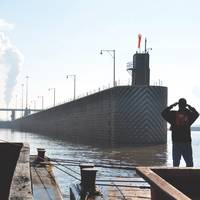
Late last year, the Transportation Research Board released a major study that was undertaken “in response to the rapid development of domestic sources of energy and questions about the safest ways to move these products.” The Study Committee examined the operational responses of the three primary modes impacted by the fracking revolution – rail, pipeline and maritime. A primary observation of this work was that that the “Marine Transportation System Offers a Model for Robust Safety…
Port Canaveral Resumes Operations
As of 12 noon today, the U.S. Coast Guard Captain of the Port (COTP) approved restricted commercial vessel transit through Port Canaveral to allow the port to support the arrival of critical fuel supplies destined for Florida consumers, and to receive cruise ships that were diverted from Port Canaveral prior to the arrival of Hurricane Irma. Port Canaveral previously had limited operations capability due to lack of water and limited electric power. However, this update to the port's Condition Zulu confirms the port's ability to regain full operational capability over the next few days, as efforts are well underway at Port Canaveral to resume normal operations. Port Canaveral CEO, Capt. John Murray, said, "Our ability to supply the critical fuel needs of Florida has been a priority.
Salvage and Marine Firefighting
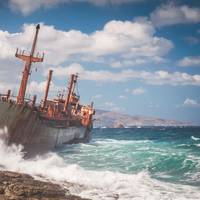
Salvage and marine firefighting are complex response efforts often undertaken in adverse weather and sea conditions. While no two oil spill responses are the same, the diversity of variation between any two oil spill responses is not near as great as the diversity of any two salvage and marine firefighting responses. As a result, salvage and marine firefighting response providers must plan for and anticipate a wide range of variation in what will be required to address their portion of a marine casualty. The U.S.
Biofouling Keep Out!
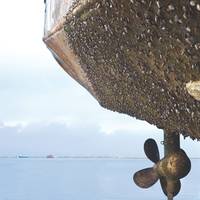
Biofouling was a backburner issue until 5 March 2017. On that day the Government of New Zealand ordered the bulk carrier DL MARIGOLD out of NZ waters after the vessel’s hull was determined to be excessively fouled with potentially invasive organisms including barnacles and tube worms. The bulker was not allowed back until it showed that the underwater surfaces had been thoroughly cleaned. This was the first known instance of a vessel expulsion due to biofouling. It was also significant…
Lines in the Water
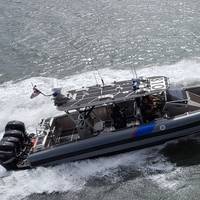
There are a variety of jurisdictional lines in the water. The first line to be considered is the national boundary between two adjacent or nearby countries. Adjacent countries tend to draw agreed boundaries extending their shoreside boundaries, with accommodations for headlands, capes, etc. Most national boundaries have been agreed upon long ago. A few, though, are not officially resolved. Somewhat surprisingly, of the four marine boundaries between Canada and the U.S., three are still in dispute.
Salvage and Marine Firefighting Verification
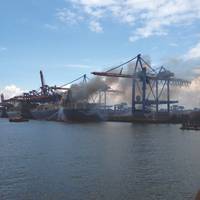
The U.S. Coast Guard regulations regarding salvage and marine firefighting (SMFF) as elements of vessel response plans (VRPs) for tank vessels have been in place since December 31, 2008. On September 30, 2013, these regulations were expanded to include non-tank vessels with a capacity of 2,500 barrels or greater of fuel oil. The VRP requirement was established by the Oil Pollution Act of 1990 (OPA 90). be resubmitted for approval of each significant change. The salvage and marine…
Coast Guard Sets Port Condition Whiskey in NC
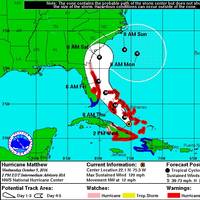
The U.S. Coast Guard is urging mariners and members of the maritime community across North Carolina to prepare for Hurricane Matthew as Condition Whiskey is set for North Carolina Waterways. The Captain of the Port (COTP) has set Condition Whiskey for all waterways in the North Carolina COTP Zone in preparation for the anticipated weather impact of Hurricane Matthew. Gale force winds of 39 mph and above are predicted along the coast of North Carolina within 72 hours. During this…
Coast Guard Sets Port Condition X-Ray in NC Waters
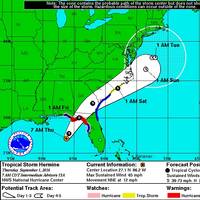
The Captain of the Port (COTP) North Carolina has set Port Condition X-Ray for all navigable waterways in the North Carolina COTP Zone in preparation for the anticipated weather impact of Tropical Storm Hermine, the U.S. Coast Guard announced. Gale Force winds of 34 knots or greater are predicted along the coast of North Carolina. All self-propelled oceangoing vessels over 500 gross-tons, all oceangoing barges and their supporting tugs and all tank barges over 200 gross-tons intending…
Adventure Runner Calls off Voyage at Sea

The runner ignored a previously issued order from U.S. Coast Guard Captain of the Port (COTP) to not depart on his seagoing journey. The order outlined specific safety conditions which Baluchi failed to meet. At approximately 2 a.m. Sunday, a Coast Guard Station Fort Lauderdale boatcrew discovered Reza Baluchi aboard his makeshift hydro pod approximately 7 miles off the coast of Jupiter en route to Bermuda. Coast Guard crews remained on-scene with Baluchi throughout the night to ensure his safety and to prevent other vessels from colliding with the hydro pod.
Ice Condition 3 for Delaware Bay
The Captain of the Port (COTP), Delaware Bay is notifying mariners that Ice Condition 3 has been set for the Port which includes the Delaware Bay and River, the C&D Canal, Cape May Harbor and Canal, and the ICW. This means that weather conditions are favorable for the formation of ice in navigable waters, but navigation is not impacted by ice. When ice is present, but less than 2 inches, vessels must have a propulsion system with adequate horsepower, and be able to maneuver un-assisted through the ice without needing to stop, back off and ram the ice. Vessel moorings should be checked frequently to ensure the vessel is adequately moored. Vessels at anchor should maintain their engines on standby at all times.
Hurricane Condition Whiskey for Port of Delaware Bay
The Captain of the Port (COTP), Delaware Bay, has set a modified Port Condition WHISKEY due to the anticipated arrival of a severe winter storm that will impact the Pennsylvania, New Jersey, and Delaware area in the next 72 hours. The COTP has determined the ports of Philadelphia, Camden, and Wilmington and surrounding areas will likely experience high winds, increased seas, and excessive tide variations. Members of the port community should take adequate precautions and review the Severe Weather Contingency Plan. * Vessels must have effective mooring and anchorage arrangements for anticipated storm surge and winds; vessel agents are asked to notify vessel masters of this requirement. * Facilities must minimize debris that could become missile hazards.
COTP Delaware Bay Modifies Ice Condition II
The Captain of the Port (COTP) Delaware Bay is notifying mariners that Ice Condition II has been modified to expand STEEL HULL RESTRICTIONS in the Delaware River. There have been reports of ice formation that may impact navigation throughout the COTP zone. * Only steel hull vessels may operate in the Delaware River north of the Betsy Ross Bridge, in the Salem River, and within the Chesapeake and Delaware (C&D) Canal. * Vessels should be able to maneuver unassisted through the ice without needing to stop, back off and ram the ice. * Vessel moorings should be checked frequently to ensure the vessel is adequately moored. * Vessels at anchor should maintain their engines on standby at all times when ice is present.
Mariners Transiting Delaware River Cautioned
The Captain of the Port (COTP) Delaware Bay is notifying mariners that Upper Delaware River lighted buoy 33 (LLNR 3875) and Upper Delaware River lighted buoy 36 (LLNR 3920) are in the center line of the channel. Buoy 33 is 550 yards north of the charted position and currently located in the center of Edgewater Channel. Buoy 36 is 150 yards north of charted position and currently located in the center of Edgewater Channel. Mariners are advised to exercise caution when transiting the area as these off station buoys could present a threat to navigation. (For information about operations in the USA contact GAC USA at [email protected]) Source: U.S. Coast Guard, Sector Delaware Bay, Marine Safety Information Bulletin # 12-15 dated 27 February 2015
Insights: Steven Candito, President & CEO, NRC

This month’s featured INSIGHTS executive is Steven A. Candito, President and CEO of the National Response Corporation (NRC). He has extensive experience with OPA 90 compliance issues with particular focus on vessel owner and insurance matters. Candito was previously an attorney with Haight Gardner Poor & Havens, specializing in maritime litigation and environmental law. He also served as a marine engineer aboard Exxon USA’s domestic tanker fleet from 1980 to 1985. Candito is a graduate of Hofstra University School of Law and the United States Merchant Marine Academy.
Shore Leave: Re-think on Balancing Security, Seafarer Rights
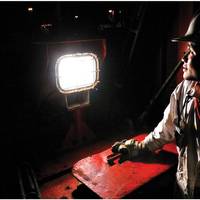
Before port states became hyper-sensitive to security issues, shore leave was natural part of a seafarer’s life. You worked long and hard hours at sea, often for extended periods of time on long voyages. When the ship reached port, you went ashore and decompressed, connecting with family and friends. That and much more changed after the terrorist attacks of 11 September 2001. The IMO adopted the International Ship and Port Facility Security (ISPS) Code mandating enhanced security onboard vessels subject to the SOLAS Convention.
Marcus Hook Range Rock Blasting
The Coast Guard will be enforcing a safety zone within the waters of the Delaware River, from Marcus Hood, Pennsylvania, north to Eddystone, Pennsylvania until March 15, 2016. The safety zone will cover all navigable waters in the Delaware River within 500 yards of vessels and machinery conducting rock blasting, dredging, and rock removal operations. This zone is intended to protect personnel, vessels and the marine environment in these navigable waters while operations are being conducted. Entry into, transiting, or anchoring within the safety zone is prohibited unless authorized by the Captain of the Port (COTP), Delaware Bay, or his designated representative.





